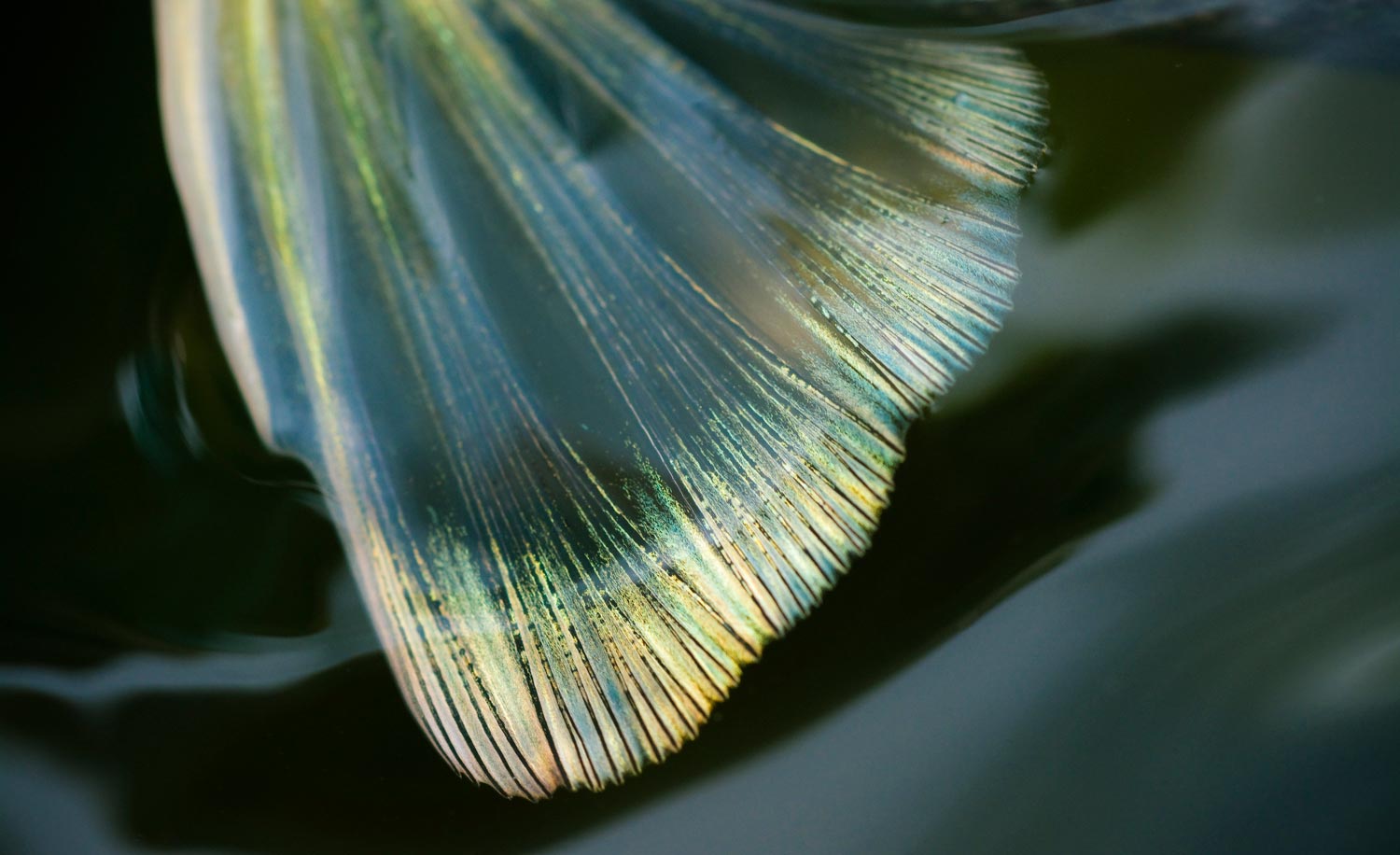I’m guilty.
I have called them ugly fish. I have shown a lack of interest in bass largely due to their color palette. Then, just the other day I noticed the fin on this large mouth.
I’m a big enough man to admit when I’m wrong.
Louis Cahill Gink & Gasoline www.ginkandgasoline.com hookups@ginkandgasoline.com Sign Up For Our Weekly Newsletter!

I always thought a lot of common species were either ugly or boring or overall just annoying in my pursuit of other (“better”) species. Then I started keeping them in fish tanks in my house. I’ve gained a whole new appreciation for natives and don’t consider any fish to be not worth my time. In addition to getting to see their colors change with the occasion, they’ve got more personality then you’d ever imagine. Fascinating.
Don’t call it a bass. Call it by its regional Southern name, green trout. Maybe that’ll help. Or maybe it’ll help if you eschew all the assumptions about mainstream largemouth bass fishing techniques, just pick up a fly rod and go after them like you would a trout. No fish finders or big fancy boats, no rod rack with ten different rods all rigged for different situations and instant deployment, no huge faceless compounds with miles of water and shoreline to confuse you. Just you and your instincts and powers of observation, and the fish. Go to a local pond and fish from the shore, a float tube or a small boat. Or go float one of the tannin rivers that dot the South, or one of the many creeks and rivers that harbor the other green trout – smallmouths. The first time your popper or fly is smashed by three pounds of green trout, you’re gonna find your five-weight has its hands full.
While not as physically colorful as a trout, a green trout exhibits a beauty all its own. They are stocky bruisers with out-of-proportion mouths and a variety of fin shapes, all designed for the perfect predatory machine. What they lack in color is made up in the diversity of shapes and textures, something somewhat lacking in the more primordial design of a trout.
As one who lives three hours from the closest trout stream, I contented myself with chasing green trout on local ponds and rivers of closer proximity. But what I viewed as a concession soon changed into a monor obsession. Green trout can be every bit as difficult to fool into hitting as a big brown. They fight like hell, too, with wild head-shaking leaps and bulldog runs than can make any self-respecting fly fisherman fear for his equipment.
Don’t get me wrong; trout are my passion. But the green trout has bullied his way in there. His beauty may not be so obvious as a trout’s, but it’s definitely there.
Great comment Tom. You summed it up very well & I appreciate it.
Well said!!!!
Beautiful photo, Louis.
Louis what do you call Bluegills 😉
My buddy runs a fly shop up here in Massachusetts, not exactly a LargeMouth hot spot. He fishes out of a kayak, always uses a floating line (likes the “Ambush” line on an 8wt for huge flies” and Al out every trip catches one ore more 5lb + Bass. His secrets ?
– fish early:4:45-7:30am.
– fish small, “no motors” ponds
– fish around junk, docks, etc.
– be a very accurate caster.
its cicada fly fishing on my kayak right now….. bass fishing is so good hard to get time for spey practice
Perhaps the problem here is the definitions of “ugly”. It has nothing to do with color at all. Ugly is an inverse measurement of length, girth, and fight. The smaller and whimpier the fish, the uglier. The larger, fatter, and fiestier the fish, the un-uglier.
I hope this helps your understanding.